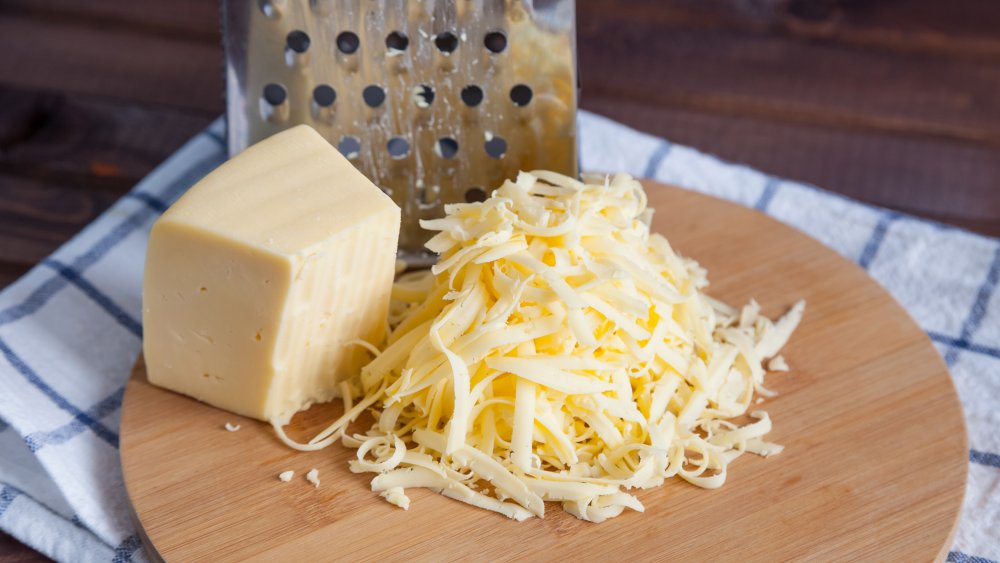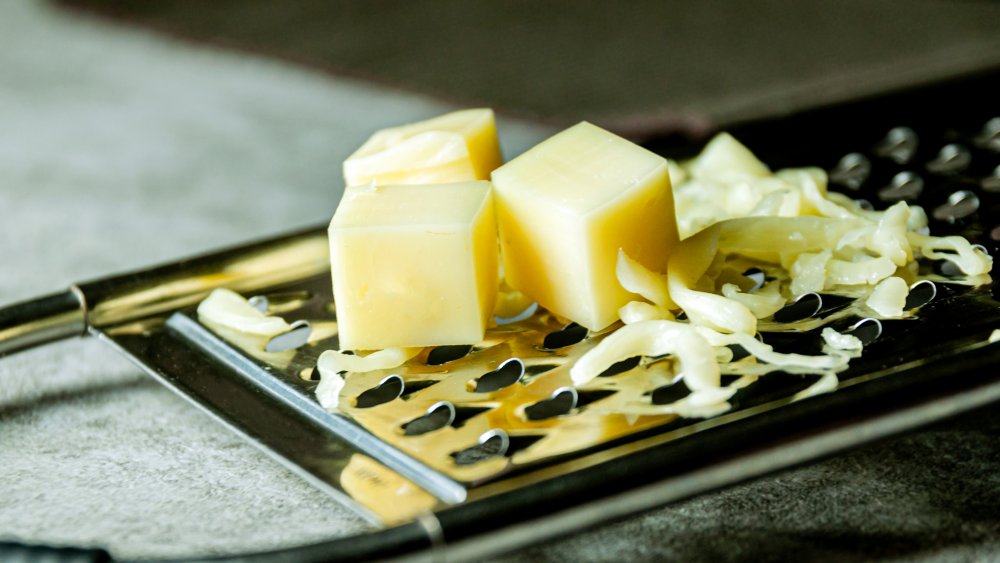You've Been Grating Cheese All Wrong
Sprinkled onto pizza dough, stirred into a bechamel to make the perfect mac and cheese, or melted over a plate of tortilla chips for nachos, grated cheese is a dairy staple in our diets. But it turns out that you might be grating cheese all wrong.
If you've ever nicked a knuckle or sliced a fingertip while grating a block of cheddar on your metal box grater, then you're all too familiar with this problem. Likewise, if you've ever had to deal with the annoyance of your cheese spilling out of the box grater and onto your counter instead of staying on the plate or bowl where the grater was placed, then you've probably wondered if there's an easier way. Luckily, the answer is yes.
The right way to grate cheese
Grating blocks of cheese doesn't have to be such an ordeal. It turns out that there's a very easy way to make your box grater work for, instead of against you: simply turn it on its side (via The Kitchn).
Doing so has a lot of benefits. First, grating the cheese horizontally makes it easier to protect your fingers from those sharp metal holes, meaning no more scraped knuckles. Secondly, it helps stabilize the grater. Balancing a box grater on a plate leaves you susceptible to slips and skids that, again, can result in scratched fingers, but turning the grater on its side helps keep things steady.
After you're done grating the amount of cheese you need, you can simply dump it out of the grater and into a bowl, onto a plate, or into the pot, pan, or skillet where your food is waiting for a blanket of cheesy goodness.
Another tip? If you find it hard to grate cheeses like mozzarella and Monterey Jack on a box grater, try freezing the cheese for 10 to 15 minutes before you grate it. This will firm up the cheese, so it grates easily instead of turning to mush (via Cooking Light).

